
Photoshop 30 hrs.
Realistic Fur tips:
1.) Fur follows form, often along muscle lines, and obeys physics which means longer fur will usually droop a little.
2.) Realistic fur is rarely uniform in length, color, or flow. Variation is key. Fur is never just tiny little straight uniform lines all over the place. Long fur will sometimes end in little squiggles. Strands most often taper from darker bases to lighter tips. Flecks of color may occur. Adding a little noise and imperfections can go a long way towards upping the realism.
3.) White fur should not have black shadows unless the goal is extreme high contrast and even then, the shadows should be blue-black or violet-black but not pure black. The shadows in white fur will most often be cream colored or blue depending on lighting situation and they will most often be soft, not harsh.
4.) Fur reflects light and shiny black fur reflects it the best. This effect is easiest to notice in multi-colored animals in bright sunlight where you can see the difference between the way the environment is affecting the different colors.
http://www.dogbreedplus.com/dog_bre...../basenji-5.jpg
http://2.bp.blogspot.com/-0UZ1PWmD3.....epherd+tri.jpg
http://3.bp.blogspot.com/-krIJofNIr.....asenji+tri.jpg
If you sample along the top highlights, you'll notice the colors come out to be cool grays which runs counter to the notion that highlights should be warm and shadows cool. Why? Again, shiny fur reflects the environment and in these cases, it's reflecting blue sky. The effect varies and may be extreme or subtle based on various factors. The reflection effect can also sometimes be overpowered if the light source is direct and bright enough.
Sample the underside-shadows here: http://news.petmeds.com/news/wp-con.....me-300x290.jpg and you'll see that they are green. Why? Again, fur reflects environment and in this case, it's reflecting green grass.
5.) Photoshop's "Unsharp Mask" filter is a very handy tool for sharpening blurry fur and adding a grain effect with slight color variation, however, overuse can cause ugly artifacts to appear. The smudge tool can also be quite useful for pulling out strands but as with the Unsharp Mask filter, it can become very destructive with overuse. Use these two in tandem carefully and the effect can be quite pleasing.
6.) Long, thick fur tends to grow in clumps and group flows with stray strands crisscrossing. This effect adds to the appearance of depth. The undercoat will be darker because it is in shadow and the outer coat will lighter because it is more exposed to the environment.
7.) Start with a dark base and draw lighter color strands from the darkness. Why? Because those strands of fur cast shadows. The base of a strand of fur will almost always be darker than the tip because the tip is coming out from the shadows of other fur strands into the light.
8.) Very, very short fur such as on a muzzle or leg tends to be better represented as very thin, ellipsoidal dots following the flow of the form. It is a common mistake to draw muzzle fur way longer than it should be.
9.) Do not just copy photos, learn the theory behind why fur looks the way it does. That way, you'll be better equipped to draw fur in situations where you can't find a good photo reference.
10.) Eyelashes cast shadows. They will shade the upper side of an eyeball and often cast thin, tapering-line shadows over the highlights.
11.) If you're relying solely on a several-dots brush to make fur, you are severely limiting yourself. There are many, many other possibilities for fur brushes. At least a few of your brushes should have noise and imperfections built in. On the flipside, don't let your brushes do all the work or you will end up with a messy, unappealing Photoshopocalypse. There is no way around putting the work in, at least not that I know of.
12.) Fur will tend to be thinner, finer, and shorter in finer-skinned areas but thicker, longer, and coarser in thicker-skinned areas. Take these two assclowns for example: http://bjpentecost.deviantart.com/a.....ch-a-557426895 Notice how the fur is thicker along their shoulders and thighs but thinner along their front sides.
Hope you guys find this useful.
Realistic Fur tips:
1.) Fur follows form, often along muscle lines, and obeys physics which means longer fur will usually droop a little.
2.) Realistic fur is rarely uniform in length, color, or flow. Variation is key. Fur is never just tiny little straight uniform lines all over the place. Long fur will sometimes end in little squiggles. Strands most often taper from darker bases to lighter tips. Flecks of color may occur. Adding a little noise and imperfections can go a long way towards upping the realism.
3.) White fur should not have black shadows unless the goal is extreme high contrast and even then, the shadows should be blue-black or violet-black but not pure black. The shadows in white fur will most often be cream colored or blue depending on lighting situation and they will most often be soft, not harsh.
4.) Fur reflects light and shiny black fur reflects it the best. This effect is easiest to notice in multi-colored animals in bright sunlight where you can see the difference between the way the environment is affecting the different colors.
http://www.dogbreedplus.com/dog_bre...../basenji-5.jpg
http://2.bp.blogspot.com/-0UZ1PWmD3.....epherd+tri.jpg
http://3.bp.blogspot.com/-krIJofNIr.....asenji+tri.jpg
If you sample along the top highlights, you'll notice the colors come out to be cool grays which runs counter to the notion that highlights should be warm and shadows cool. Why? Again, shiny fur reflects the environment and in these cases, it's reflecting blue sky. The effect varies and may be extreme or subtle based on various factors. The reflection effect can also sometimes be overpowered if the light source is direct and bright enough.
Sample the underside-shadows here: http://news.petmeds.com/news/wp-con.....me-300x290.jpg and you'll see that they are green. Why? Again, fur reflects environment and in this case, it's reflecting green grass.
5.) Photoshop's "Unsharp Mask" filter is a very handy tool for sharpening blurry fur and adding a grain effect with slight color variation, however, overuse can cause ugly artifacts to appear. The smudge tool can also be quite useful for pulling out strands but as with the Unsharp Mask filter, it can become very destructive with overuse. Use these two in tandem carefully and the effect can be quite pleasing.
6.) Long, thick fur tends to grow in clumps and group flows with stray strands crisscrossing. This effect adds to the appearance of depth. The undercoat will be darker because it is in shadow and the outer coat will lighter because it is more exposed to the environment.
7.) Start with a dark base and draw lighter color strands from the darkness. Why? Because those strands of fur cast shadows. The base of a strand of fur will almost always be darker than the tip because the tip is coming out from the shadows of other fur strands into the light.
8.) Very, very short fur such as on a muzzle or leg tends to be better represented as very thin, ellipsoidal dots following the flow of the form. It is a common mistake to draw muzzle fur way longer than it should be.
9.) Do not just copy photos, learn the theory behind why fur looks the way it does. That way, you'll be better equipped to draw fur in situations where you can't find a good photo reference.
10.) Eyelashes cast shadows. They will shade the upper side of an eyeball and often cast thin, tapering-line shadows over the highlights.
11.) If you're relying solely on a several-dots brush to make fur, you are severely limiting yourself. There are many, many other possibilities for fur brushes. At least a few of your brushes should have noise and imperfections built in. On the flipside, don't let your brushes do all the work or you will end up with a messy, unappealing Photoshopocalypse. There is no way around putting the work in, at least not that I know of.
12.) Fur will tend to be thinner, finer, and shorter in finer-skinned areas but thicker, longer, and coarser in thicker-skinned areas. Take these two assclowns for example: http://bjpentecost.deviantart.com/a.....ch-a-557426895 Notice how the fur is thicker along their shoulders and thighs but thinner along their front sides.
Hope you guys find this useful.
Category All / All
Species Unspecified / Any
Size 1200 x 858px
File Size 1.71 MB
I find this very useful, as someone who's hoping to expand their capabilities with fur textures and grow their own style of it. Particularly remembering the rule of fur grain following form, something I as a new dog owner can note in observation there, too. The artwork is also stunning, naturally.
Thanks for sharing. :)
Thanks for sharing. :)

 FA+
FA+






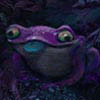
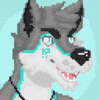
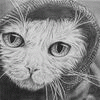
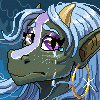





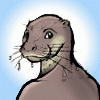
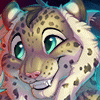




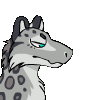

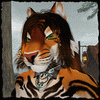
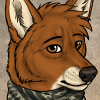



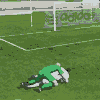










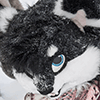


Comments